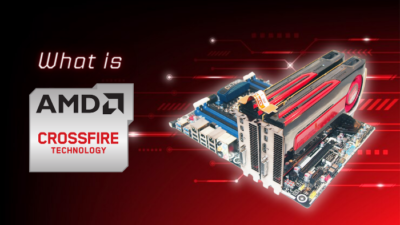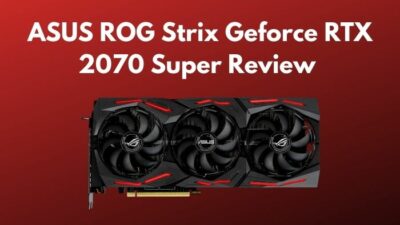Despite being a generation older, the Intel Core i9 12900K is still a top dog when it comes to gaming performance. And to get the most out of this CPU, the GPU needs to be just as versatile.
Otherwise, a great deal of CPU performance will be left unused & you’ll experience GPU bottlenecking issues.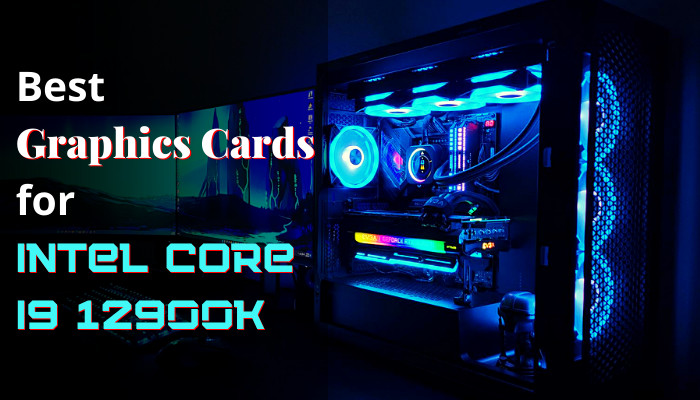
So which GPU should you pair with your i9 12900K for the best optimal gaming performance? Let’s find out.
But in case you’re in a hurry, just go for ASUS ROG Strix RTX 4080 OC, as it offers the sweet spot for the best gaming experience when coupled with an i9 12900K.
4 Best GPUs for i9 12900K in 2023
| Model | Award | Target Resolution |
|---|---|---|
| ASUS ROG Strix RTX 4080 | Best Overall | 4K+Ray Tracing |
| MSI Gaming GeForce RTX 4090 SUPRIM Liquid X 24G | Best Premium | High-Refresh-Rate 4K+Ray Tracing |
| ASUS Dual GeForce RTX™ 4070 White OC Edition | Best Bang for Buck | 1440P |
| XFX Speedster MERC310 RX 7900XTX | Best AMD Offering | 4K |
Now that the GPU market has become stable, thanks to crypto losing its luster and lack of scalping issues, you can finally buy a graphics card at its MSRP. Heck, even the release of newer-generation GPUs makes it a perfect time to pick up a suitable one for you.
But which one should you choose from the vast amount of fine candidates? And which prospects should you consider before making a purchase decision?
We’re glad to inform you that we regularly review each GPU model from various vendors with different PC configurations. During this extended review and categorizing process, we’ve picked which GPU is best suited for which PC builds.
So here are our top 4 GPU picks that are most suitable for an Intel i9 12900K PC:
1. ASUS ROG Strix GeForce RTX 4080
The RTX 4080 graphics card is based on Nvidia’s new Ada Lovelace 5nm architecture and comes with 9728 CUDA cores and 16GB 256-bit memory. It uses the AD103 chip that offers 48.74TFlops FP32 performance and next-gen visuals with ray tracing and DLSS.
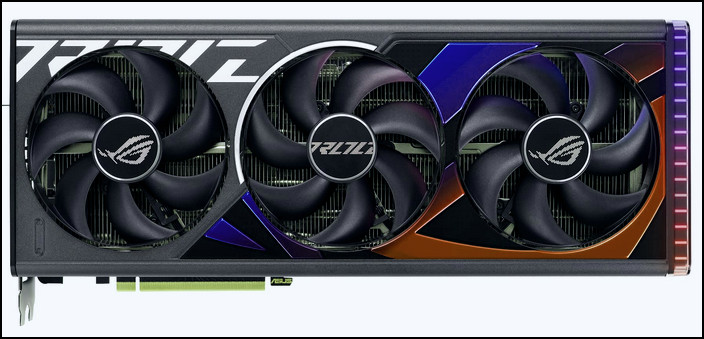
Specification
GPU frequency: 2505MHz(Boost), 2535MHz(OC) | Memory: 16GB GDD6X, 4000MHz | Bandwidth: 256-bit, 22.4Gbps | Recommended PSU: 750W | Features: 3rd gen 76 RT cores, 4th gen 304 Tensor cores, AV1 support, DLSS 3
- »Great value for money
- »Incredible built quality and design with RGB lighting
- »Stays cool and quiet even under heavy load
- »Fits perfectly in most mid-tower gaming PCs
- »Excellent dual-BIOS implementation
- »Relatively large card
- »Bit expensive compared to the Founder’s Edition
What We Liked Most About It
If you’ve been keeping track of the GPU releases, you might have heard about the VRM issues of the RTX 30 series cards. While pretty much every brand like Zotac or MSI was getting railed by VCore failure, ASUS was the only brand that didn’t suffer such fallback.
And the ASUS ROG Strix RTX 4080 gaming graphics card follows the same testament of reliability. Plus, when coupled with an incredibly capable CPU such as the i9 12900K, it becomes an unstoppable beast in both gaming and productivity.
From its size to its performance, it is an extreme card in every sense of the word. Combining the 4K 60fps gaming, AURA Sync RGB lighting, metal shroud+backplate, and aggressive OC potential with a higher power limit; the ASUS Strix 4080 certainly has a lot of desirable prospects.
What I loved most about these 4000 series cards is the AI wizardry behind DLSS 3’s frame generation feature. For example, I was getting around 30fps while running CP2077 at native 4k max settings. After enabling DLSS 3+frame generation, I was getting over 75fps. That’s a massive performance jump with no visual downgrade.
Here’s a quick look at how well this card performs with an i9 12900K on the current-gen titles, thanks to the 3rd-gen RT and 4th-gen Tensor cores:
| Game and Graphics Settings | RTX 4080 Performance(Average Framerate) | Temperature |
|---|---|---|
| Cyberpunk 2077, 4K Psycho RT, DLSS 3 Quality | 67fps(stock) 71fps(OC) | 58℃ 61℃ |
| Hogwarts Legacy, 4K Max Settings, RT Off, DLSS Quality | 96fps(stock) 103fps(OC) | 55℃ 56℃ |
| Fortnite UE5, 4K Max, DLSS Quality | 65fps(stock) 70fps(OC) | 58℃ 60℃ |
| Starwars Jedi Survivor, 4K Max | 53fps(stock) 54fps(OC) | 61℃ 61℃ |
| Battlefield 2042, 4K Max, DLSS Quality | 119fps(stock) 124fps(OC) | 53℃ 54℃ |
Over the five titles I’ve tested, it’s pretty clear that this graphics card is more than capable of handling 4K 60fps+ray tracing, albeit with DLSS.
And with the help of axial-tech fans in alternate spinning mode, the GPU remained exceptionally cool and quiet during my prolonged gaming sessions. Not to mention, the vapor chamber cooling and the extended heatsink also allow better airflow to dissipate the heat from this beast of a card.
Now the 16GB GPU memory might seem low for a 1200$+ card, especially when AMD is offering 24GB VRAM for under 1000 dollars, but it’s still enough for 4K high settings. During our game test, I noticed that the VRAM usage never crossed 11GB, even with ultra-quality textures.
Furthermore, the 9728 CUDA cores and hardware-level AV1 support, as well as the Tensor cores, make it amazing for productivity workloads. Additionally, I think the AV1 codec is perfect for streaming and content creation; so it’s a big plus point for these 40 series GPUs.
It’s often the small things that matter the most. The same can be said about the features that come with RTX 4080; Nvidia Reflex, AI-powered voice and video enhancements in Nvidia Studio, game-ready drivers, etc really gave a solid and unique user experience which I think most people will really appreciate.
In case you’re interested, here are the best aura sync compatible GPUs like this Strix 4080 graphics card.
What We Didn’t Like
Case compatibility can be a bit concerning since the ASUS Strix 4080 is a chunky boi(although not as much chunky as the RTX 4090 GPUs). This GPU boasts 3.5 slot design, so make sure you have enough clearance in your PC case to mount the 4080.
It is also around 100$ more expensive than the Founder’s Edition(also known as reference cards), which can put off certain buyers.
Who Is It For?
If you’re looking for the most suitable GPU for your i9 12900K that offers great value, reliability, performance, cooling, and aesthetics, then you should definitely consider the ASUS ROG Strix 4080 Gaming GPU.
Verdict
No matter which aspect you choose, this RTX 4080 card always comes as the best GPU that money can buy. Yes, it’s a bit expensive, but it’s not too expensive for a diminishing return(looking at you, RTX 4090).
It is both reliable and capable enough to easily recommend to the masses who are looking for a decent high-end GPU that can go along with high-end CPUs. That’s why the ASUS ROG Strix RTX 4080 is our Editor’s Choice and the best overall GPU for Intel i9 12900K.
Speaking of RTX, here’s our in-depth comparison between RTX and GTX GPUs.
2. MSI Gaming GeForce RTX 4090 SUPRIM Liquid X 24G
The RTX 4090 is based on the AD102 graphics processor, which is the world’s first 5-nanometer GPU based on Nvidia’s Ada Lovelace architecture. It boasts 16384 CUDA cores, 512 TMUs, 176 ROPs, and 24GB 384-bit memory with a whopping 1TB/s bandwidth.
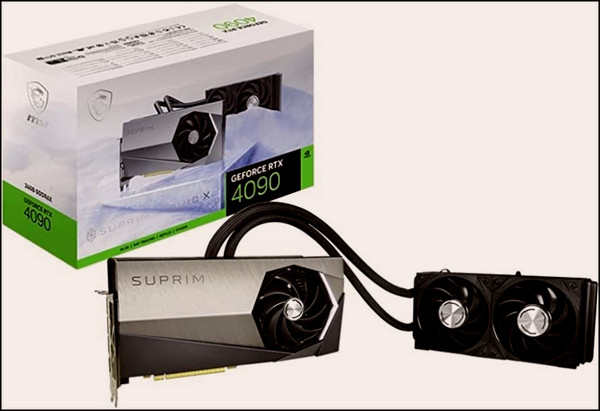
Specification
GPU frequency: 2625MHz(Boost), 2640MHz(OC) | Memory: 24GB GDDR6X, 2.5GHz | Bandwidth: 384-bit, 21Gbps | Recommended PSU: 850W | Features: 3rd gen 128 RT cores, 4th gen 512 Tensor cores, AV1 support, DLSS 3
- »Sleek aesthetic with mind-blowing performance
- »Compact dual-slot design, plus the 240mm radiator
- »4-pin PWM fans on the radiator are nice and quiet+can be swapped with 3rd party models
- »Dual-BIOS with idle fan-stop
- »VRAM and VRM get hotter compared to other AIB cards
- »Requires space for the 240mm radiator
What We Liked Most About It
Nvidia really kicked it out of the park with their launch of x90 SKU cards. Similar to the last gen’s 3090 model, the RTX 4090 is the new performance king, the ultimate high-end GPU that can blow any other GPU’s performance out of the park.
With its unrivaled hardware specification and unmatched gaming performance, even the 1700-1800$ price tag doesn’t seem unreasonable when you think about it. This GPU is powerful enough to deliver 4K high refresh rate gaming, heck, it can even do 8K 60fps on some demanding titles.
Now you might be wondering, why go for the liquid-cooled version over the traditional air-cooled cards that are more compatible?
Well, liquid cooling is not only beneficial for having a relatively lower GPU temperature and quieter setup, but it also reduces the form factor of the 4090, from being a triple-slot card to a dual-slot one.
It also greatly improves the overclocking headroom to push the performance even further. If you’re interested, check out our detailed discussion on whether liquid cooling is worth it for GPUs.
Now let’s see how well the 4090 SUPRIM Liquid X can perform when it’s coupled with an i9 12900K:
| Game and Graphics Settings | RTX 4090 Performance(Average Framerate) | Temperature |
|---|---|---|
| Cyberpunk 2077, 4K Psycho RT, DLSS 3 Quality | 87fps(stock) 89fps(OC) | 56℃ 57℃ |
| Hogwarts Legacy, 4K Max Settings, RT Off, DLSS Quality | 141fps(stock) 148fps(OC) | 52℃ 54℃ |
| Fortnite UE5, 4K Max, DLSS Quality | 95fps(stock) 97fps(OC) | 53℃ 54℃ |
| Starwars Jedi Survivor, 4K Max | 68fps(stock) 71fps(OC) | 55℃ 56℃ |
| Battlefield 2042, 4K Max, DLSS Quality | 139fps(stock) 144fps(OC) | 54℃ 54℃ |
With the help of DLSS 3 and frame generation, the RTX 4090 can go well above 60fps with ray tracing on any of the most demanding titles. And for competitive games, it can easily deliver over 100fps which is great for 144Hz gaming.
I was also able to squeeze out around 8% extra performance by overclocking the GPU and memory by 10%. To no surprise, I didn’t see any noteworthy fluctuation in the GPU temperature at all, which is a big plus point of having a liquid-cooled GPU.
Additionally, the MSI Centre allowed me to customize the fan curve of the two 120mm PWM radiator fans which greatly helped with the acoustics/fan noise.
And thanks to its large 24GB memory buffer, I could also enjoy 8K 60fps on certain AAA titles like DOOM Eternal. Content creators will also greatly benefit from this 24GB fast video memory for rendering and productivity workloads, especially if they already own a high-end CPU like i9 12900K.
Also, check out our detailed discussion on whether FreeSync can work on Nvidia GPUs or not.
What We Didn’t Like
I’ve always been a bit skeptical of liquid-cooled graphics cards as they are usually bulky due to the radiator and don’t make that much of a difference in performance. Unfortunately, the MSI 4090 SUPRIM Liquid X didn’t manage to win me over in this regard.
Not to mention, the AIO block only covers the GPU die. The VRAM and VRMs are still air-cooled with a single fan on the GPU shroud. As a result, the GPU memory and power modules got a bit toasty, reaching around 71 and 80 degrees respectively.
Who Is It For?
If you wanna go ham with an expensive and most powerful GPU currently available on the market, then look no further than the MSI RTX 4090 SUPRIM Liquid X 24G, provided that you have enough room in your PC case.
Verdict
Despite requiring additional room for a 240mm radiator, this AIO-based GPU is still the most performant graphics card on the market that really offers the premium experience. And it also provides the much needed cooling solution for such a beast of a card.
Hence, the MSI RTX 4090 SUPRIM Liquid X is our top pick for the best premium GPU to pair with an i9 12900K.
3. ASUS Dual RTX 4070 White OC Edition
The ASUS Dual RTX 4070 White OC Edition is a factory-overclocked dual-slot card with a custom white design. The GPU is based on AD104, Nvidia’s 5nm Ada Lovelace architecture that comes with 5888 CUDA cores, 184 TMUs, 64 ROPs, and 12GB 192-bit memory.
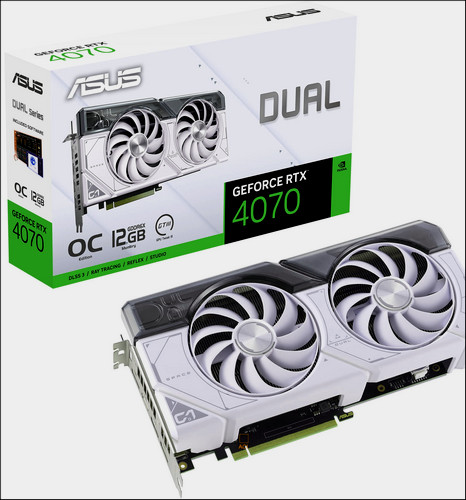
Specification
GPU frequency: 2520MHz(Boost), 2550MHz(OC) | Memory: 12GB GDDR6X, 2550MHz | Bandwidth: 192-bit, 21Gbps | Recommended PSU: 650W | Features: 3rd gen 46 RT cores, 4th gen 184 Tensor cores, AV1 support, DLSS 3
- »Amazing cooling performance and power efficiency
- »Eye-catching design with solid build quality
- »Great for 1440p high refresh rate gaming
- »Offers a nice price-to-performance ratio
- »Dual-BIOS support.
- »Bit bulky
- »Struggles in 4k ray tracing
What We Liked Most About It
As 1440p gaming is becoming more and more mainstream, the RTX 4070 is your most affordable option to jump into high-performance gaming. It comes with the same AI-powered DLSS 3+frame generation technology that we’ve seen in the high-end 4080 and 4090 graphics cards.
Among all the 4070 variants, the ASUS Dual 4070 White OC Edition stands out for multiple reasons. It offers a great price-to-performance ratio due to being factory overclocked and costing no more than Nvidia’s MSRP.
What I found most interesting about this product is that it boasts many high-end features that are only reserved for ASUS’s ROG Strix lineup. Similar to ROG Strix 4070 OC, it has axial-tech fans, a die-cast shroud with added rigidity, and high-end capacitors while being slimmer and 200$ cheaper than the ROG version.
| Game and Graphics Settings | RTX 4070 Performance(Average Framerate) | Temperature |
|---|---|---|
| Cyberpunk 2077, 4K Psycho RT, DLSS 3 Quality | 51fps(stock) 54fps(OC) | 57℃ 58℃ |
| Hogwarts Legacy, 4K Max Settings, RT Off, DLSS Quality | 63fps(stock) 69fps(OC) | 58℃ 60℃ |
| Fortnite UE5, 4K Max, DLSS Quality | 45fps(stock) 47fps(OC) | 58℃ 59℃ |
| Starwars Jedi Survivor, 4K Max | 43fps(stock) 46fps(OC) | 57℃ 59℃ |
| Battlefield 2042, 4K Max, DLSS Quality | 84fps(stock) 87fps(OC) | 56℃ 58℃ |
And the similarities don’t end there. The Dual 4070 White OC also provides amazing 1440p, and even 4K gaming performance that is on par with the more expensive ROG version. The 12GB VRAM was more than enough for 1440p ultra settings and managed to deliver over 100fps on my colleague’s i9 12900K PC.
With the added support of AV1 codec, the powerful AI-accelerated GPU and 12GB memory buffer are very suitable for any sort of productivity.
Due to being a dual-slot card, it is much more compatible with most cases compared to other triple-slot cards. This also really helped with the GPU’s cooling in my colleague’s compact PC build.
Last but not least, the build quality of the GPU is superb, and the white color shroud looked aesthetically pleasing in our all-white gaming rig. The GPU also comes in black if you don’t like the white version.
What We Didn’t Like
Despite being a dual-slot card, it still felt a bit bulky and might not fit well in mini-ITX builds. The fans were also a bit loud when the GPU crossed 60 degrees. The lack of RGB lighting can also be a deal breaker for some gamers.
For those, here’s our shortlist of the best RGB graphics cards on the market.
Who Is It For?
If you’re looking for an affordable but high-performance GPU that supports premium features like DLSS and Ray Tracing and will go great with your i9 12900K, then the ASUS Dual 4070 White OC is the right choice for you.
Verdict
Yes, there are more affordable GPUs in the market. But none of them can match the performance and feature set value of this GPU. That’s why we’ve picked the ASUS Dual RTX 4070 White OC Edition as the best bang for buck GPU to pair with an i9 12900K.
4. XFX Speedster MERC310 RX 7900XTX
The RX 7900 XTX is AMD’s current flagship graphics card with a full Navi 31 GPU. It’s based on their latest RDNA 3 architecture and boasts 6144 cores, 96 CUs, 24GB GDDR6 VRAM and six MCDs with 96 MB of L3 cache.
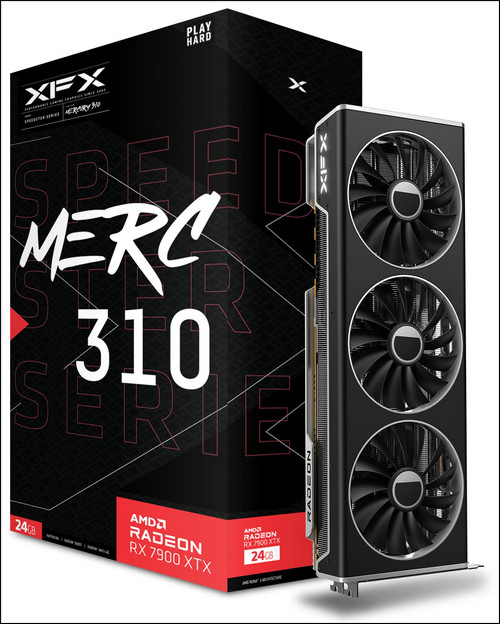
Specification
GPU frequency: 1855MHz(Base), 2615MHz(Boost) | Memory: 24GB GDDR6, 2500MHz | Bandwidth: 384-bit, 20Gbps | Minimum PSU requirement: 850W | Features: 96 RDNA3 CUs(RT+AI accelerators), AMD FSR 2.1, AV1 support
- »More affordable than an RTX 4080 with faster rasterization performance
- »24GB VRAM
- »Dual BIOS
- »Cool and quiet triple fan design
- »Nice overclocking headroom
- »Lower ray tracing and upscaling performance compared to RTX GPUs
- »A bit loud with the Max Power BIOS
What We Liked Most About It
Enough of the Nvidia GPUs; AMD’s high-end offering, the 7900 XTX, is a beast of a graphics card that can provide a sublime 4K gaming experience, minus Ray Tracing. Well, it can do ray tracing, but the performance is nowhere near Nvidia’s high-end GPUs.
While ray tracing enthusiasts might prefer RTX GPUs, the 7900 XTX is a great choice for 4K gaming if you don’t care much about ray tracing.
The 7900 XTX’s custom AIB card from XFX bears the company’s usual sleek and badass design that offers low temperature and quiet operation. And when we paired it with an Intel i9 12900K, this is the result we got:
| Game and Graphics Settings | RX 7900 XTX Performance(Average Framerate) | Temperature |
|---|---|---|
| Cyberpunk 2077, 4K Ultra RT, FSR 2.1 Quality | 44fps(stock) 46fps(OC) | 62℃ 63℃ |
| Hogwarts Legacy, 4K Max Settings, RT Off, FSR 2.1 Quality | 100fps(stock) 105fps(OC) | 55℃ 56℃ |
| Fortnite UE5, 4K Max, TSR Quality | 45fps(stock) 47fps(OC) | 59℃ 60℃ |
| Starwars Jedi Survivor, 4K Max | 67fps(stock) 70fps(OC) | 61℃ 61℃ |
| Battlefield 2042, 4K Max, DLSS Quality | 119fps(stock) 117fps(OC) | 53℃ 54℃ |
As we can see, the RX 7900XTX can easily outperform the more expensive RTX 4080 in native 4K when the ray tracing is disabled. But it quickly falls behind as soon as you turn on RT.
Another noteworthy aspect of this GPU is the large 24GB VRAM amount, which is not only future-proof for next-gen titles but will also provide a significant boost in content creation. 7900 XTX also supports AV1 codec for video encoding and live streaming.
This GPU also has double ball bearing fans which managed to keep the GPU temperature well below 65 degrees while remaining quiet throughout the whole testing session.
What We Didn’t Like
As I have mentioned before, AMD has neither perfected the ray tracing performance nor provided an equivalent solution to the AI-powered DLSS technology. This can be a big letdown for people like me who want to experience the full graphical glory at 4K.
The fans were also a bit loud under heavy load after switching to the Max Power BIOS.
Who Is It For?
If you’re looking for a GPU under 1000 dollars that is great for both 4K gaming and productivity, then the XFX Speedster MERC310 7900 XTX should be at the top of your list.
Verdict
The 7900 XTX can be a great alternative for a high-end GPU without breaking the thousand-dollar mark. It has a better price-to-performance ratio than the RTX 4080 when you don’t think about ray tracing and stuff.
Hence we can easily recommend the XFX Speedster MERC310 7900XTX as the best AMD GPU that can sit alongside an i9 12900K.
How We Chose These GPUs
From the vast amount of GPU models and SKUs, it’s really hard to choose any one of the GPUs, especially for recommendations. Similar to our other product reviews, we have followed the same method to shortlist the best GPUs for a specific demographic, in this case, the i9 12900K users.
Thanks to our GPU hierarchy article, which consists of up to 70 graphics cards, we already know the best-performing cards on the market. From that list, we picked the best ones that are most suitable for an i9 12900K PC.
After that, from my decade-long PC expertise, I chose the best AIB cards from well-reputed brands based on current market price, performance, compatibility, and user experience.
Then we put those GPUs in our i9 12900K build and tested each card one by one. Based on the results, I categorized and shortlisted the best GPUs that managed to stand out in various facets.
Things You Need to Consider Before Buying a GPU
Before making a purchase decision, you need to consider some aspects which are crucial for hardware consideration.
Budget and Usecase
The first thing you need to keep in mind is your budget and what you are going to do with the GPU. GPUs come in a wide range of price tags, anywhere from 100$ to 2000$+. Determine a budget and your intent of use before you make a choice.
For example, if you have 600$ and want to live stream and experience ray tracing, then go for RTX 4070. But if you don’t care about ray tracing but want a gaming and productivity-based GPU, then go for AMD RX 6950XT.
Compatibility
The next crucial factor you should consider is overall compatibility. I’m not just talking about whether or not the GPU fits perfectly inside your PC case; I’m also talking about selecting a GPU that won’t create any bottleneck throughout the system’s performance.
Make sure the graphics card isn’t too overkill or too weak compared to other components on your PC and check the slot design & power consumption of the GPU.
Price-to-performance ratio
You also need to check the cost per frame of your shortlisted GPUs. Hardware Unboxed and TechPowerUp are very useful in this regard.
If you notice that a certain GPU model offers tremendous value and features at a slightly increased price compared to your budget, consider going for that GPU. Trust me, spending 15-20 bucks for a huge performance jump will serve you greatly in the long term.
You should also keep an eye on the warranty period and read its user reviews before purchasing a graphics card.
Frequently Asked Questions
Is an i9-12900K overkill for gaming?
In some cases, the CPU performance of an i9 12900K can be overkill. But it’s ideal to stay ahead of the hardware requirement curve for future-proofing.
Can an RTX 4070 cause bottleneck with an i9 12900K?
No, an RTX 4070 won’t be bottlenecking when it’s paired with an i9 12900K.
What is the overclocking potential of RTX 4080 when coupled with an Intel i9 12900K?
In an RTX 4080+i9 12900K PC build, you’ll get around 12% more performance out of your GPU after overclocking it.

